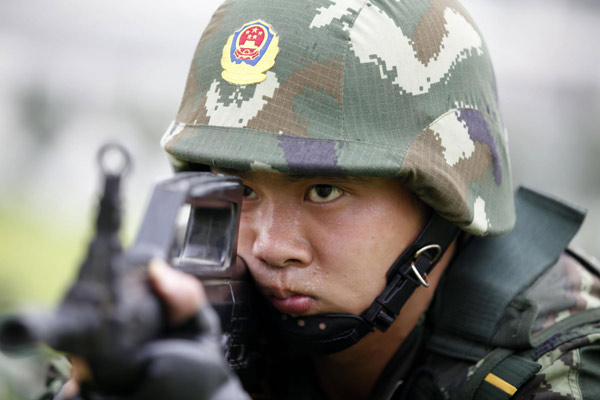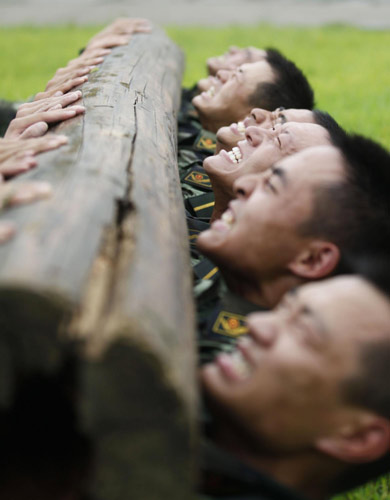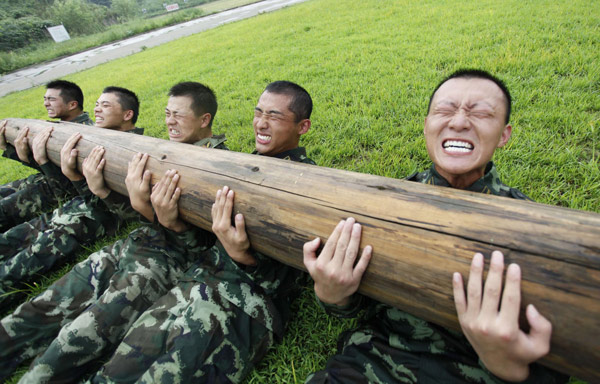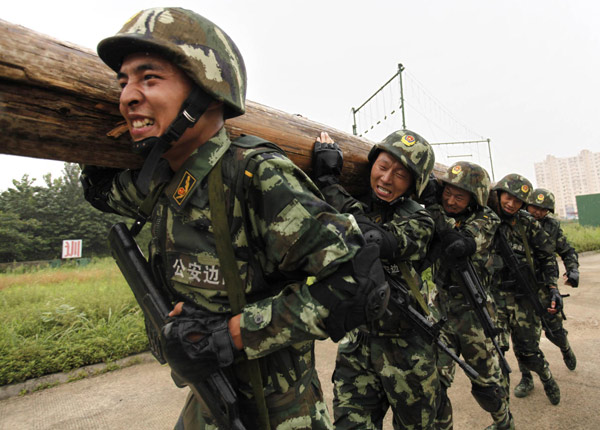August 4, 2011

Ten years ago, the U.S. Navy set about building a new class of small, cheap, numerous Littoral Combat Ships meant to
dominate dangerous coastal waters. But after a decade of politics and design-by-committee, the LCS has turned out to be
anything but small, cheap and numerous. LCS is the “
wrong ship at the wrong time,” retired Navy Cmdr. John Patch wrote.
On the other side of the Pacific, the Navy’s biggest maritime rival, faced with the same requirement for small, cheap, numerous ships, quickly produced exactly that. The result: the People’s Liberation Army Navy’s triple-hull Type 022 missile boat, a “
thoroughbred ship-killer,” according to Patch.
To some observers, the PLAN missile boat — or, more to the point, packs of these boats — poses
yet another major Chinese threat to U.S. power in the Pacific. Eighty-three Type 022s firing more than 640 anti-ship missiles in quick salvos represent a “
serious cause for concern,” according to retired Navy Cmdr. George Root.
To others, the diminutive Type 022s look like mere juicy targets for American helicopters and submarines. They cite the extremely poor combat record of small missiles boats doing battle with larger vessels and aircraft.
One thing is indisputable. The Type 022 is “a potential success story on how to field small combatants,” Patch wrote. Its merits in combat remain to be seen, but at least the ship
exists to perform a combat role. The same cannot be said of the huge fleet of LCSs the U.S. Navy thought it would have by now.

Seven-Year Sprint
In just seven years, the Chinese People’s Liberation Army Navy has built 83 of the 400-ton Type 022s at an estimated cost of $40 million per ship — and production continues at a high rate in several shipyards. The U.S. Navy, by comparison, has finished just two LCS in the same span of time, each at a cost of more than $600 million.
The Chinese ships sport eight anti-ship missiles apiece plus defensive guns and surface-to-air missiles. The American vessels, lightly armed in their own right, are designed to accommodate “plug-and-play” weapons kits, none of which are complete.
To some critics, even 83 Type 022s are so much fodder for submarines and air power. Small missile-armed boats have fared very poorly in major naval battles — so poorly that the late naval historian
Antony Preston said they were “among the world’s worst warship designs since 1860,” according to Navy Undersecretary Bob Work.
Work, back when he was a mere analyst at the Washington, D.C.-based Center for Strategic and Budgetary Assessments,
summarized the experiences of Iranian and Iraqi “Fast Attack Craft” in combat with U.S. and allied forces in 1988 and 1991. “U.S./coalition forces: 40 FACs destroyed, 2 disabled; enemy: 0 U.S. or friendly forces hit, much less sunk.”
“This data suggests the weakness in focusing in on a simple fleet-on-fleet salvo model in modern naval combat,” Work wrote, “primarily because the preferred method of engaging enemy surface targets is now through asymmetric attacks (e.g., aircraft and submarine attacks against surface vessels).”
In other words, it doesn’t matter how many missile boats you build, if your opponent can bring submarines and missile-armed aircraft to bear against them.
 Double-Edged Sword
Double-Edged Sword
For China, that reality cuts both ways. Considering China’s
limited anti-submarine skills and equipment, “U.S. submarines
can currently operate freely in Chinese coastal waters,” according to MIT analyst Owen Cote, Jr. But with more and more
advanced jet fighters and surface-to-air missiles entering Chinese service, the U.S. cannot take for granted that its own aircraft can operate safely near the Chinese coast.
Nor could LCS take on the Type 022 in direct combat and count on winning. The LCS lacks major air defenses and cannot, on its own, defend against large numbers of incoming missiles. Similarly, the U.S. vessel does not carry long-range anti-ship missiles for use against craft like the Type 022.
But a head-to-head comparison of LCS and Type o22 as warships is not really useful, as neither is specifically intended to fight the other. In wartime, the Type 022s would likely prowl China’s coastal zone as far afield as the Philippine Sea, unleashing missile barrages against American aircraft carriers and their escorting destroyers.
LCS, meanwhile, would be trawling for enemy mines and submarines under the defensive umbrella of nearby destroyers and carriers —
maybe. Truth is, no one has quite figured out
what LCS is really for.
In any event, what really matters is that Beijing set out to build a large number of small warships, quickly and at low cost — and succeeded. Washington tried the same thing, and failed, big-time.
The dictatorial Chinese government and its command economy are ideally suited to building simple weapons in bulk, albeit at the risk of poor quality control. But that’s not the only explanation for China’s small-ship-building success.
The biggest reason is that China started with a requirement for a small ship, and stuck to it. The U.S. Navy allowed its undisciplined design committees to gradually corrupt and complicate the LCS’ original concept, undermining any hope of building ships cheap or fast.
That would probably come as no surprise to
Dan Ward, an Air Force officer and advocate of
building smaller weapons, faster. “I think the real culprit is our fascination with complexity, viewing it as a sign of sophistication.” China apparently does not share the same fascination.
That’s the
real reason Beijing has the coastal warship fleet America only wishes it had.





 Reply With Quote
Reply With Quote



















Bookmarks